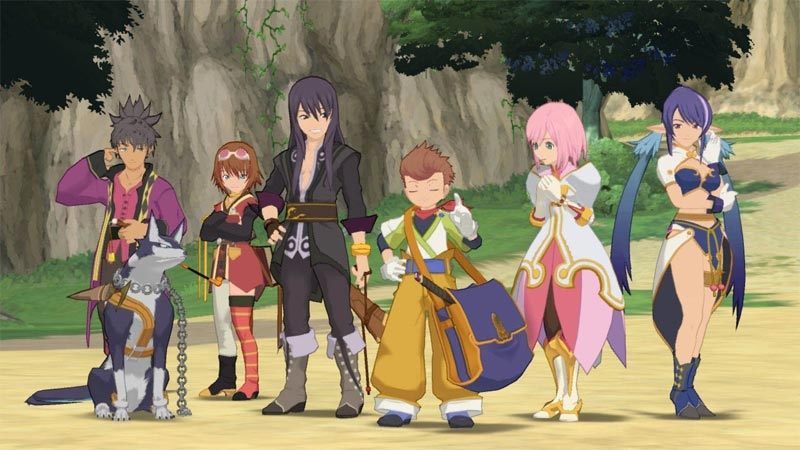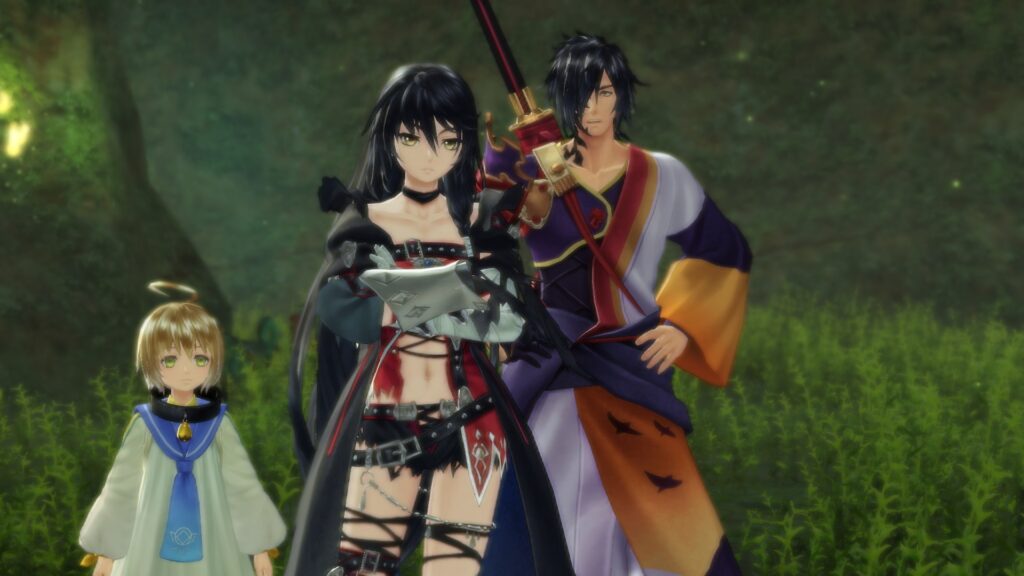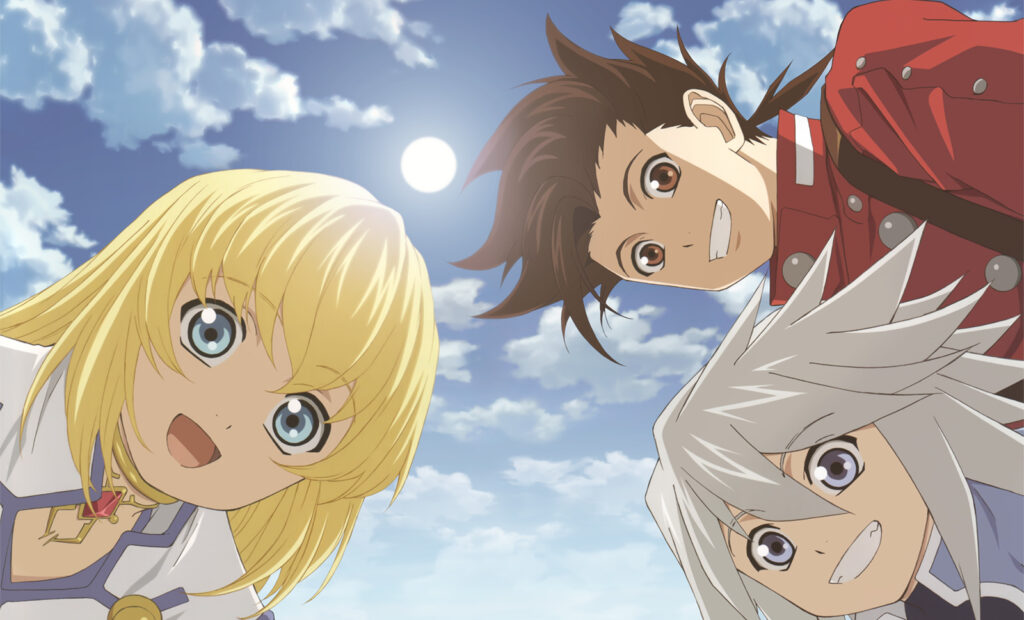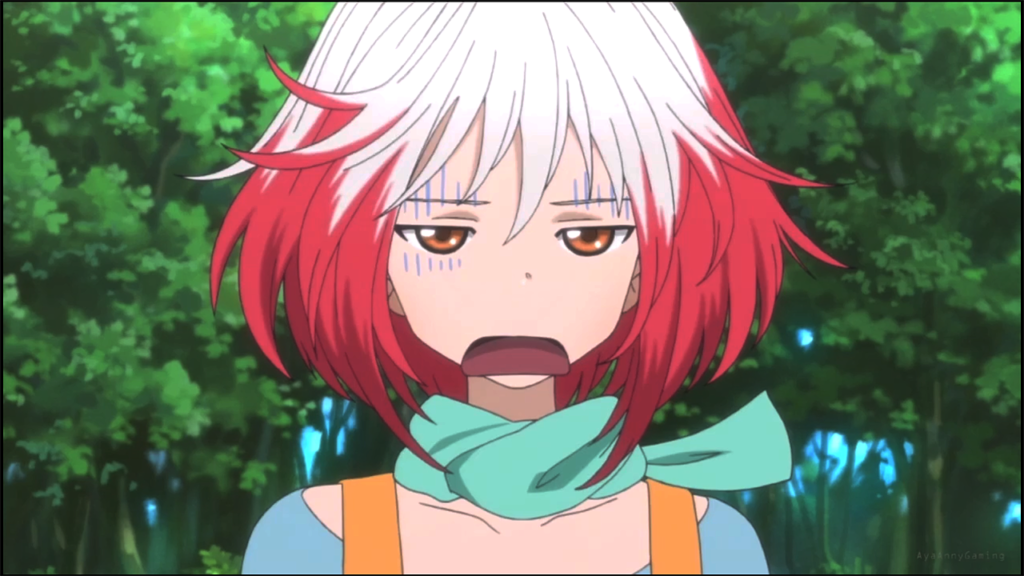Consistency. This word may be the most appropriate to describe the long-running Tales franchise. Started back in 1995 with Tales of Phantasia, the series of games that followed became a safe bet for RPG fans to dig into. No matter the year, no matter the current trend, the next Tales game always delivers. Period.
This consistency, in fact, has been used to criticize the games at some moments, making people question if keeping the franchise from revolutionizing itself was harmful in the long way. These doubts, however, seem to always fade away after each new release, especially because, up to this day, no main-entry of the franchise truly failed to capture its fans.
So, what makes fans come back release after release to a series that never attempted a transformation in its 25-year-old lifespan? What can newcomers expect from a Tales game? Where to start? Which are the best games and the lesser ones? Well, let me try to answer that.

The Tales of Characters
Since its conception back in 1995, the Tales franchise has always been a true follower of anime tropes. While Final Fantasy morphed into semi-realistic characters with western appeal and Suikoden delved deep into the complexities of a medieval war, Tales was about the quest of young heroes saving the world while spending a lot of time talking to each other. It has always been much more of a character-focused game than anything else, and these characters have always been shown as traditional anime-characters.
However, instead of simply being boring with those anime tropes, the franchise found ways to make each and every part of its cast charming, interesting, and sometimes even complex. The reason for that is dialogue. A lot of dialogue. For example, each Tales game has a lot of “skits”, small casual (and optional) conversation happening after story or side-quest events. These silly talks may vary from comical tips to more detailed information onto some story topic, yet they all happen in a way each character in it shows you something new, something beyond their starting stereotypes. Add that to many simple and small side-quests with additional dialogue and diverse situations and you have a lot of room to evolve the people in it. By the end of the day, those silly warriors and clerics will stick in your memory and give a heck of a good time.
The Tales of Combat
Another impressive asset of the franchise is its combat system. Conceived as a real-time action RPG, it broke away from the norm of its age where turn-based combats ruled. Instead of choosing spells you mapped them to shortcuts, gave instructions to the AI controlling your allies, and used your favorite character to perform combos and special attacks against hordes of enemies. At first these combats happened in 2D scenarios, mimicking a side-scrolling game while in combat, but later it naturally moved to a full 3D map with a lot of freedom and a lot of chaos.
There is a special pleasure in watching a Tales’ combat and taking part in it. Not only do you have a host of characters with very different gameplay styles to try on, but each character earns new skills and equipment as the game progresses, making every combat a new experimentation. Since 1995 there were many tweaks brought into this system, sometimes being kept in later games and others ditched in the next iteration. Unlike modern franchises making repeated use of combat mechanics in ways that make us bored after two or three games, the Tales franchise managed to do these small changes in a fashion that you can rarely get tired of playing it.

The Tales of Independence
The Tales franchise is not one big story. Each game is its own beast with its own cast, history, conclusion, and presentation. There is no requirement of having to play another game with a few exceptions, making it easy to delve into. What makes a Tales game a Tales game are its iconic “skits”, its combat system, its anime-like artwork, its colorful design, and a long and enjoyable quest to save the world.
There are, however, two Tales games that found continuity to be an option: Tales of Destiny and Tales of Xillia. The first, a game released on the Playstation in 1997, got a direct sequel named Tales of Destiny 2 in 2002, but it also gave a lot of headache to the western fans because _another_ Tales of Destiny 2 was released in the west in 2000, which happened to be in fact Tales of Eternia, the third main-entry in the series. Yeah, people still struggled to understand the importance of names back then when bringing a game from Japan to the west. The second, a game released in 2011 for the Playstation 3 immediately got a sequel the next year with the name Tales of Xillia 2. As you thought, playing the first game of either is a requirement to understand the tale of their direct sequels.
There is also a minor relationship between Tales of Zestiria and Tales of Berseria, but really, they can be tackled as completely independent games story-wise with no problem at all.
So, where to start?
Finding your way into the Tales franchise is more dependent on the platforms you own than anything else, but a newcomer can find more joy in some games than others based on what aspect of a game they are more interested in. Let me try some suggestions here based on what you typically enjoy.

The Best Games
- Tales of Abyss, available on the Playstation 2 and Nintendo 3DS is a behemoth even for Tales standards. It offers a lot of depth in its combat and equipment systems, it gets a complex story-line with perhaps some of the most intriguing twists and turns of the franchise, and it is massive in its length and side-quests available. Perhaps it may be a little too much for some casual play, but it certainly wins at almost every other area.
- Tales of Vesperia is available on every console of the current generation (Playstation 4, Xbox One, and Switch), but it was originally released for the Xbox 360 and got a japanese-only release for the Playstation 3. It is perhaps the perfect dosage of Tales for a newcomer, offering a balanced tale, the franchise standard combat, and a long journey with a lot of amazing characters. It is perhaps the most artistically beautiful game of the franchise even when compared to the recent entries, and its common but evolving tale is simply remarkable. You read more about it in my review.
- Tales of Berseria released on the Playstation 4 and is a perfect return to glory for the franchise after their major attempt at a revolution with Tales of Zestiria. Despite being related to the previous game, Tales of Berseria is its own creature, offering the most mature story of the franchise along with the first solo female lead. It is a lot more of an introspective journey about good versus evil and less of a carefree save the world stuff, but it has depth, it has style, and its combat is an evolution of what made Tales of Abyss and Tales of Vesperia great.

The Best Combat
- Tales of Graces released for the Wii, but its definitive version (and the one you should play) is Tales of Graces f, released a few years later for the Playstation 3. It offers the most light and carefree plot of the franchise and is quite short on its game length, but it completely obliterates most other Tales games when it comes to combat. The changes brought into this entry turn the battlefield into a chaotic place, allowing special attacks to be unleashed much more frequently, making dodges a more natural part of combos, and giving players a freedom to simply throw out everything they have in every combat instead of conserving energy and resources to be used against bosses only. If you want an addicting combat, you can dig right into this one.
The Iconic
- Tales of Symphonia, released in 2003 for the Game Cube and later brought to the Playstation 3, is the most iconic example of the franchise and also one of its most important members. This was the first game to bring combat to the 3D arena, introducing a whole new world to explore and already mastering some elements that have remained until today for the formula. Characters, story, conversations, combat, some freedom of choice, and a lot more make this a game to be respected and the barebones of the franchise for later entries. If you want to experience every aspect of the franchise in its classic glory, give Symphonia a shot.

The Games of Avoid
No Tales game is truly bad, but some have failed at some points which can make them not as amazing as the others. I recommend you to play every Tales game there is, but you may wish to avoid some of them as your first experience:
- Tales of Legendia, released in 2005 for the Playstation 2, was an attempt to redeem the 2D combat. Sadly, the return was far too inspired in the first releases of the franchise, making much of a game feel like a deja vu and not really its own thing. It does not help that the game’s progress seems far too linear and simple, ditching the impressive freedom of traveling around the world to solve problems at your own pace, which was achieved in Symphonia.
- Tales of Xillia, released in 2011 for the Playstation 3, is an amazing game, but it lacks the vibrant atmosphere of the franchise. Milla and Judy give us the first duo of protagonists, but their world feels a bit bleak and boring in its presentation. The combat is perhaps the best one after Tales of Graces, but it has a lot of needlessly complexity, something that gets even worse in Tales of Xillia 2.
- Tales of Zestiria, released in 2015 for the Playstation 3 and Playstation 4, is a dual-edge sword. In a way, it was the most drastic attempt to revolutionize the franchise, moving towards bigger maps, completely changing the equipment system and introducing a lot of new things to combat too. Sadly though, it is not only a game that lacks the “Tales” gene, but also a game with one of the most uninspiring protagonists and perhaps cast in general, which brings down the simple plot as well.
- Tales of Hearts is the mobile shot of the franchise and perhaps because of that a major departure from everything else. The game is still a Tales game, but everything is simple, from plot to combat, and the pace is toned down to make you play in small doses, which really harms the progression and development of its somewhat interesting cast.
